|
Kimberly-Clark in World War Two
Neenah, WI
1870-1985
Irving, TX
1985-Current
This page added 2-14-2021.
Kimberly-Clark is a paper making company that
has many products that are used daily by many consumers around the
world. One of its many products, Kleenex, has become synonymous
with facial tissue. Yet, during World War Two, Kimberly-Clark
produced what has become one of the iconic weapons of the war, the
Multiple Caliber .50 Machine Gun Mount M45, more commonly known
as the Maxson Quadmount. The Kimberly-Clark M45 gun mount not
only served in World War Two, but also in Korea and Vietnam. In
Vietnam, it was used by both the French and the American forces in that
long war.
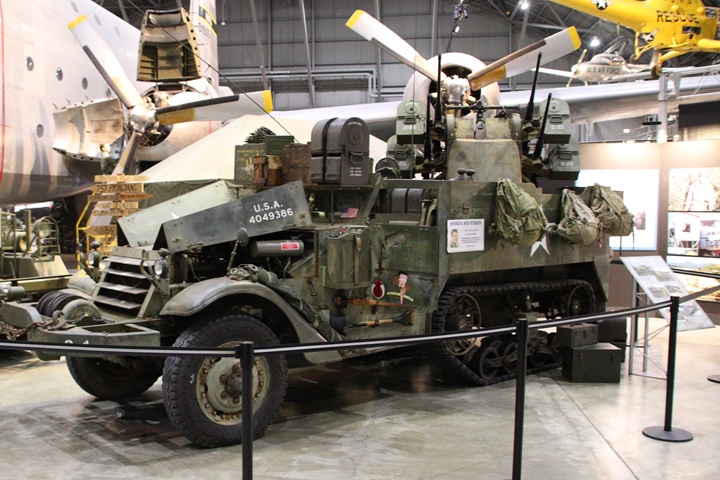
This White-built M16A2 half-track has a Kimberly-Clark-built Maxson
Quadmount in it. They have most likely seen combat with
American forces in Europe and
Korea, and the French in Vietnam. This was one of 413 M16A2
half-tracks that were sent to Korea in 1952 to help defend against human
wave attacks. It was one of four half-tracks transferred to the
French for their war in Vietnam. In 1956 it was transferred to the
French Foreign Legion in the Horn of Africa, where the present owner
found it while serving with the U.S. Army in 2006. Author's photo.
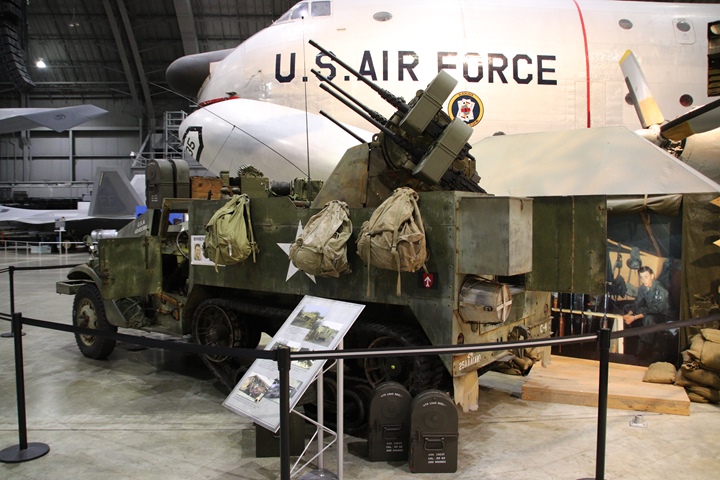
This half-track and Kimberly-Clark gun mount were on display at the
National Museum of the United States Air Force in Dayton, OH. This
was a special limited time display during the first half of 2021.
Author's photo.
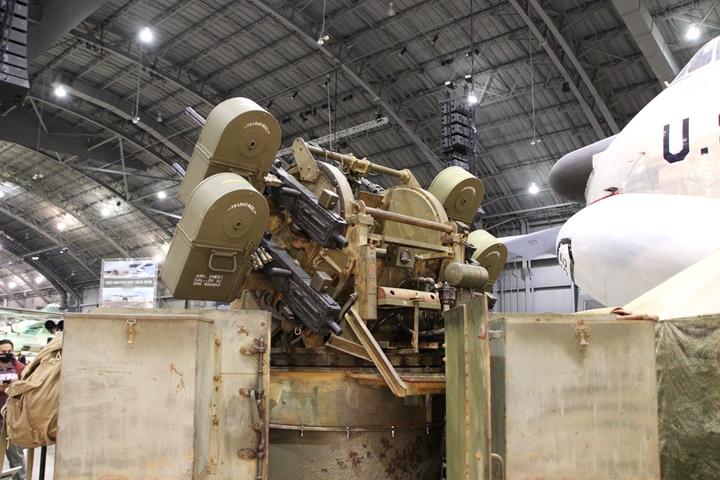
This is the only Kimberly-Clark Maxson Quadmount that has been
identified to date.
Kimberly-Clark built 5,759 M45 and M45C Quad Mounts
during World War Two. This was 32% of the total built.
Author's photo.

The Kimberly-Clark Ordnance Division in Neenah, WI won the Army-Navy "E" Award three times.
Kimberly-Clark World War Two Production:
Neenah Ordnance Division:
278 Multiple Caliber .50 Machine Gun Twin
Mount M33s,
4,773 Multiple Caliber .50 Machine Gun Mount M45s, 1,022
Multiple Caliber .50 Machine Gun Mount M45Cs, fuzes,
crepe wadding packing sleeves, and asphalt treated fire resistant
insulating material (tar paper).
The Ordnance Division was located in the company's original paper mill
in Neenah.
Kimberly, WI Mill: Liquid
chlorine. In 1943 the plant was producing 390 tons of liquid
chlorine per month.
Niagara Falls, NY Mill: Rotogravure
and book waste paper pulp
Kimberly-Clark M33 and M45 Gun Mounts
Accepted by Detroit Ordnance, US Army
The information below comes from "Summary Report of
Acceptances, Tank-Automotive Material, 1940-1945."
Published by Army Services Forces, Office, Chief of
Ordnance-Detroit, Production Division, Requirements and
Progress Branch
January 21, 1946. |
|
Mount Type and Company |
1942 |
1943 |
1944 |
1945 |
Total |
|
M33 |
|
278 |
|
|
278 |
|
M45 |
|
2,754 |
2,019 |
|
4,773 |
|
M45C |
|
|
1,022 |
|
1,022 |
|
Totals |
|
3,021 |
3,014 |
|
6,073 |
Author's Note: For the remaining M45 Quadmounts shown on this page, no information is available
if Kimberly-Clark built the units.
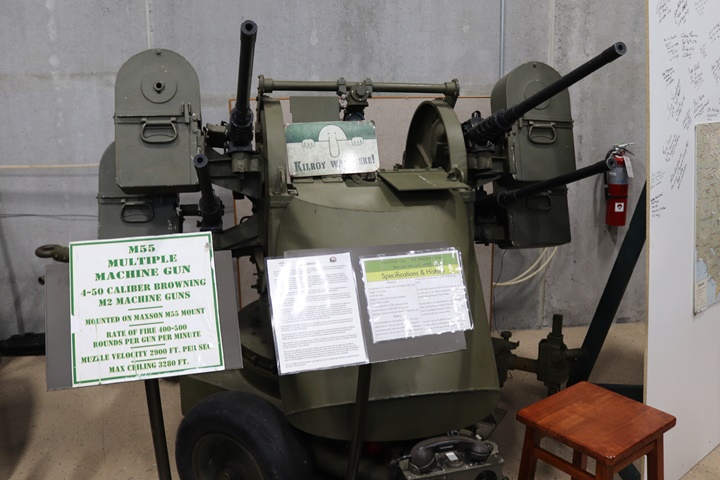
When the M45 is mounted onto an M20 trailer,
the combination was known as the M55, as seen here at the Military
Veterans Museum in Oshkosh, WI. Kimberly-Clark was one of two
companies that built the M45. The builder of this M45 is unknown,
but if it were built by Kimberly-Clark, it is only twenty miles from its
point of manufacture. Author's photo.
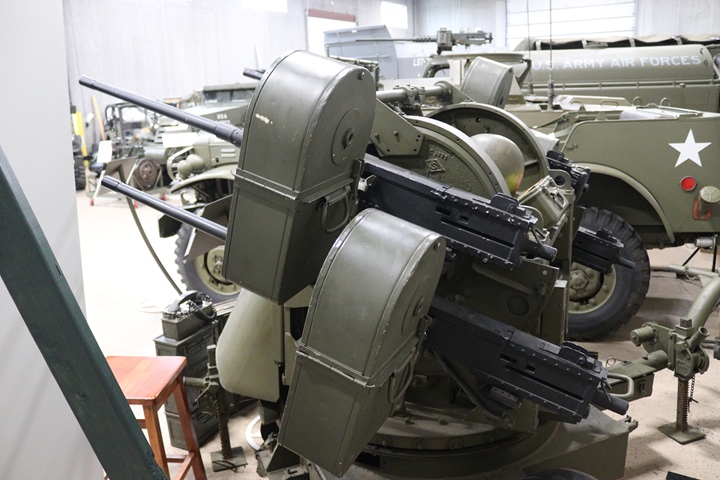
Author's photo.
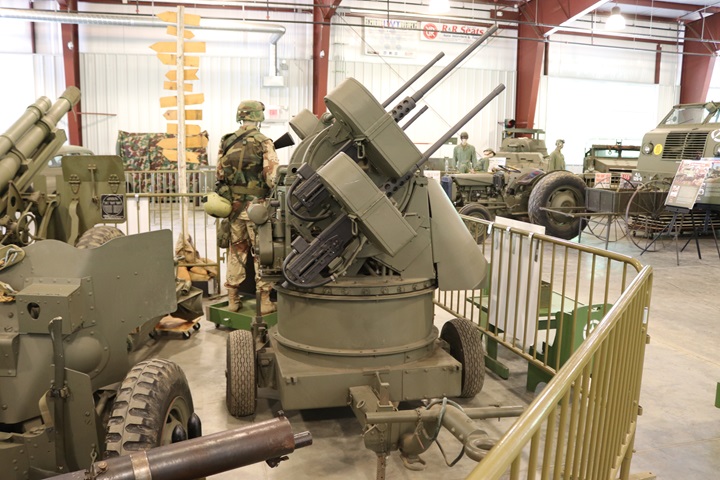
The Multiple Caliber .50 Machine
Gun Mount M45 is more commonly known as the Maxson Quad Mount. It
is
named after W.L. Maxson who invented the weapon. This is one of
the few weapons of World War Two that is known by the inventor's name. The M45 was the second multiple gun mount that W.L.
Maxson invented. The first was the M33 twin .50 caliber mount,
which was standardized by Army Ordnance on 2-26-1942 as the Twin Caliber
.50 Multiple Machine Gun Mount. It was primarily mounted on the M13
halftrack. While W.L. Maxson invented and built prototypes of his
gun mounts, his company did not receive the production contracts.
These were won by Kimberly-Clark and Landers, Frary & Clark. Maxson
did produce the variable speed drives for the weapons.
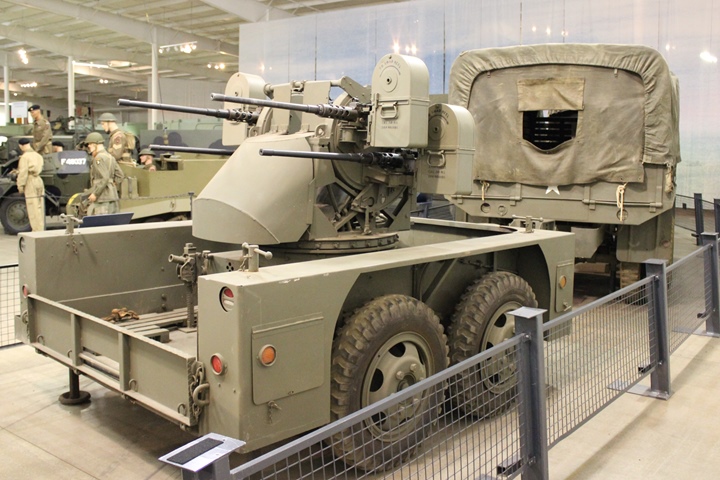
The M17 trailer was one of the methods of
transporting the M45 during World War Two. Author's photo.
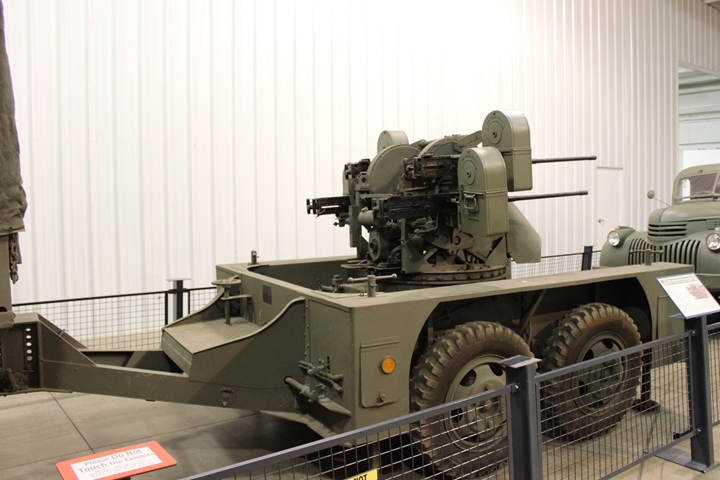
Author's
photo.
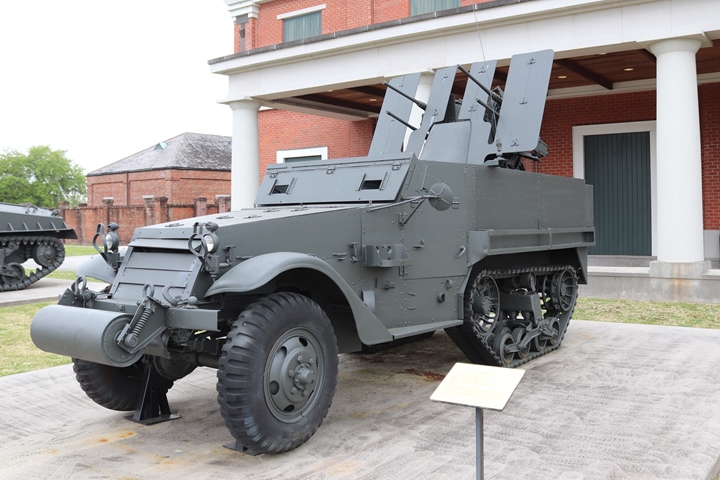
The most popular method of transporting the M45 was on an M16
half-track.
The Louisiana Army National Guard used this
type of weapon during World War Two to shoot down 127 German aircraft.
The 105th Anti-Aircraft Artillery Battalion destroyed the aircraft while
operating in North Africa, Sicily, and Italy. Author's photo.
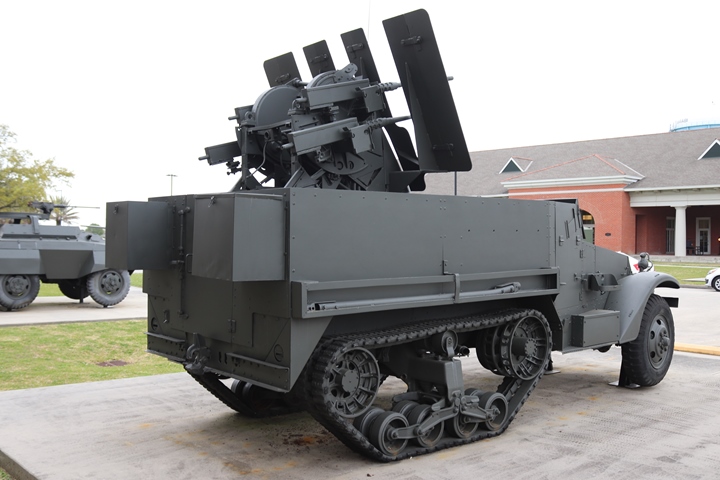
Author's
photo.
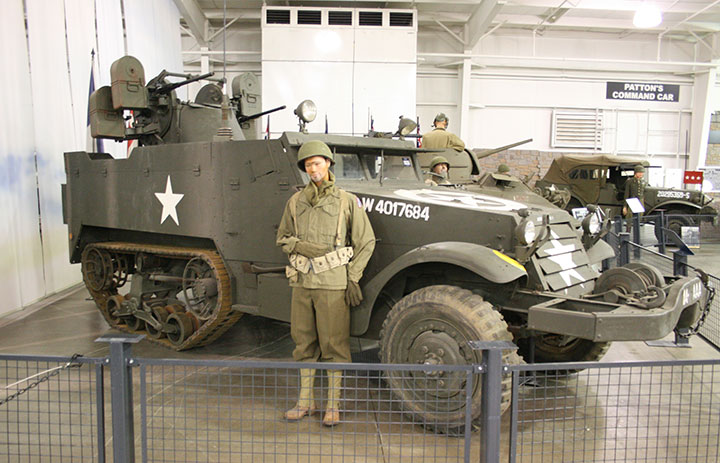
This White M16 Halftrack was on
display at the now closed National Military Historical Center
in Auburn, IN. Author's Photo.
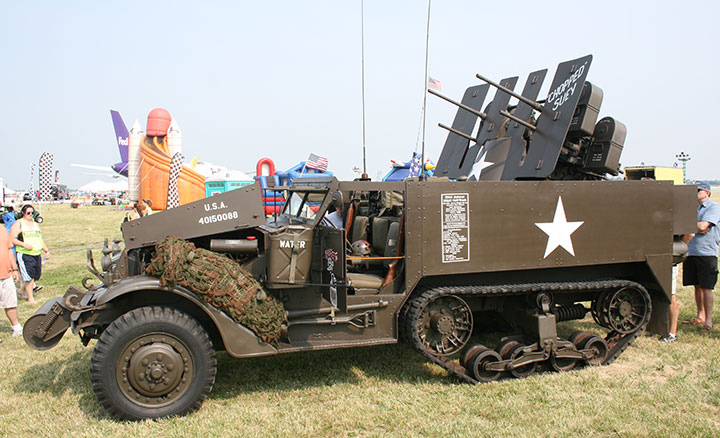
This
M16 with a Maxson Quad Mount was photographed at the Dayton Airshow.
Author's photo.
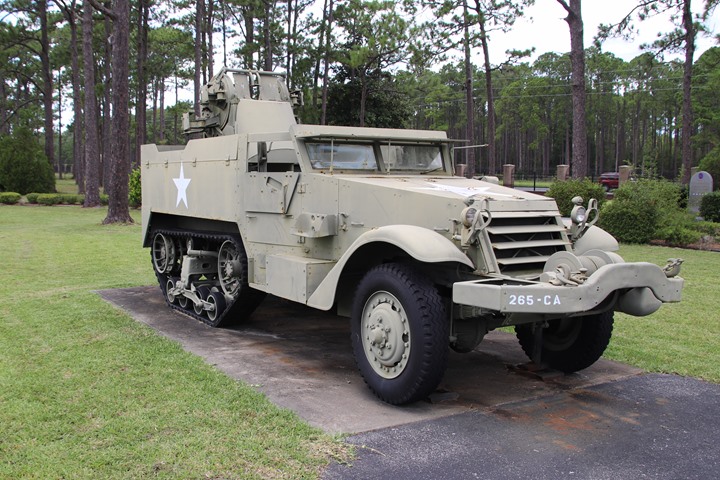
This is one of three half-tracks and two M16 versions on display at Camp
Blanding, FL.
Author's photo.
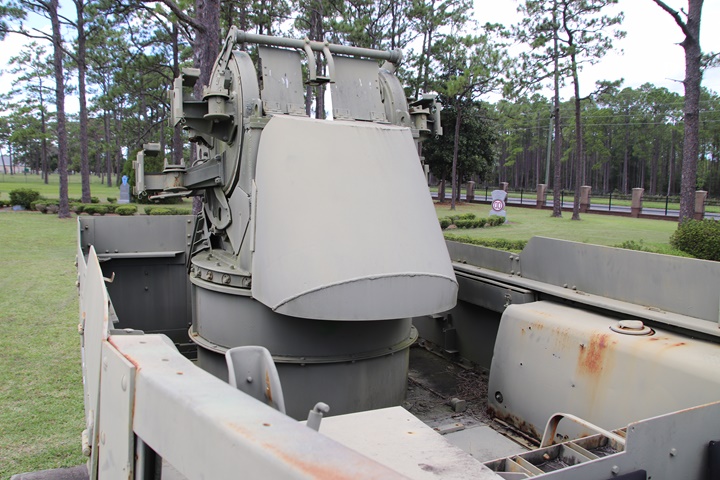
In
the M16 the M45 Maxson mounts had spacers between it and the vehicle
floor for clearance when rotating. These were added in 1952 before
the half-tracks were sent to Korea. This allowed the guns to
depress to defend against human wave attacks. Author's photo.
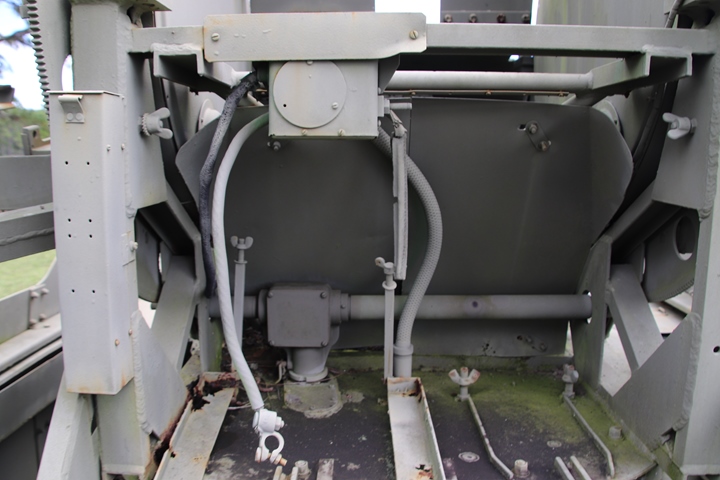
The internal drive system has been removed. This view shows that
the turret was constructed using metal weldment fabrication. The unit weighed 2,400
pounds. Author's photo.
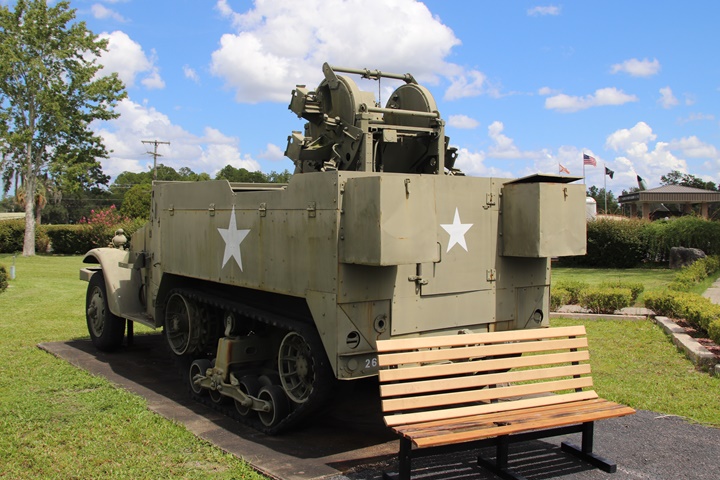
This
is the second M16 on display at Camp Blanding. Author's photo.
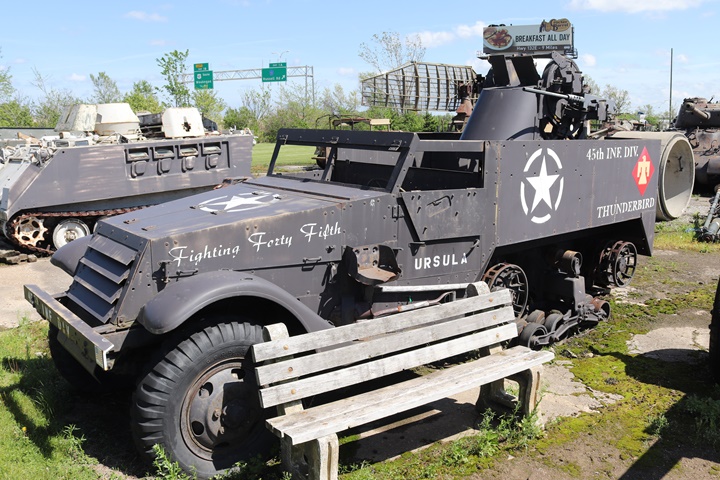
This M16 with a Maxson M45 mount is at the Russell Military Museum in
Zion, IL. Author's photo.
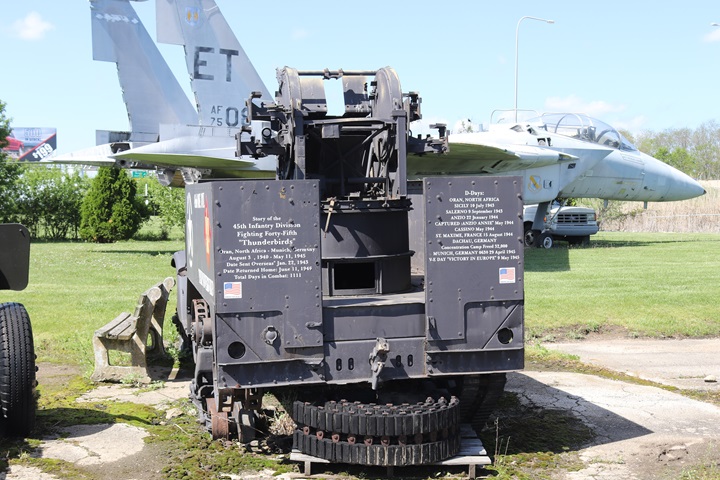
It is not very often that one can frame a photo with an F-15 in the
background. Author's photo.
|


















